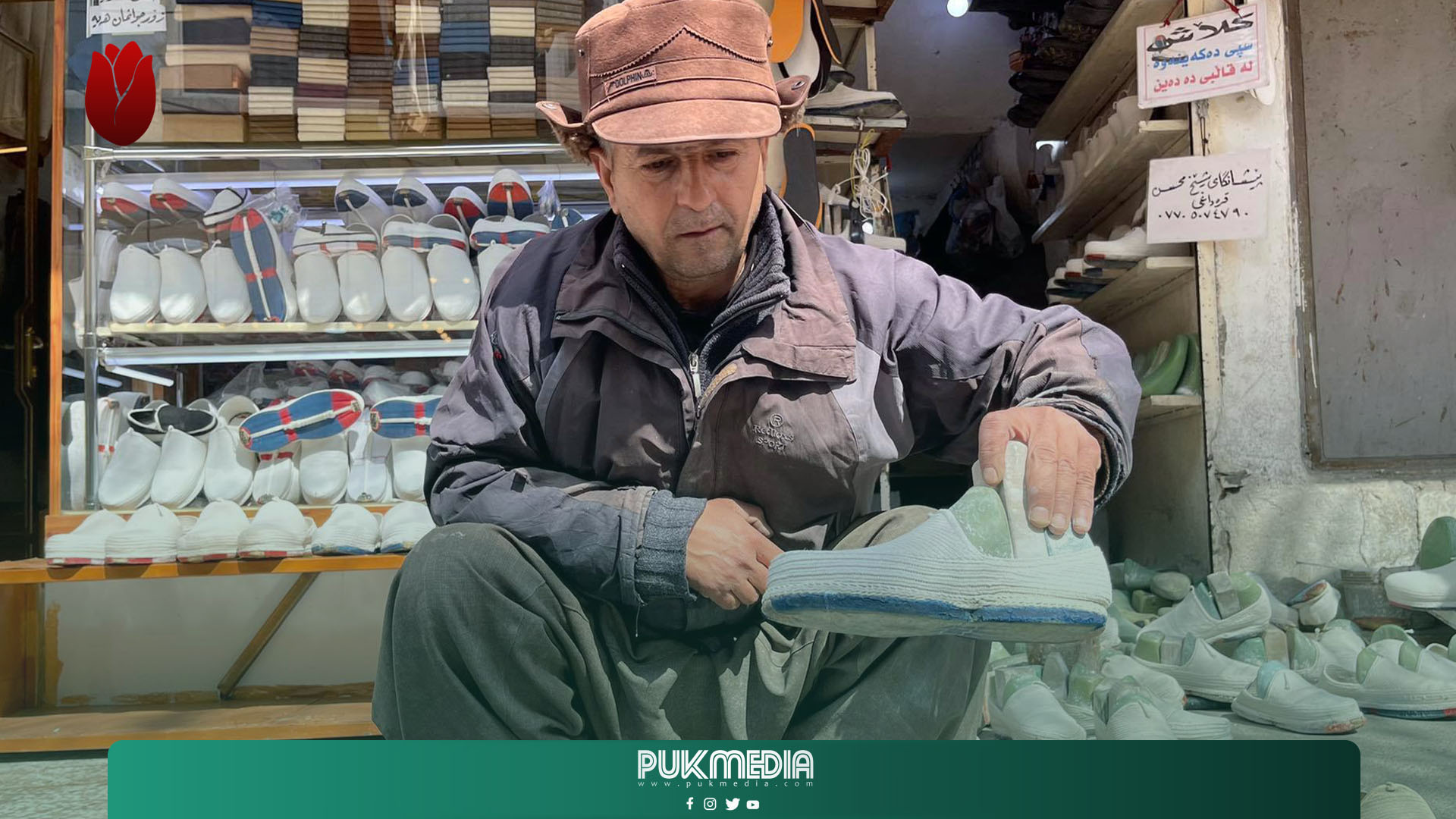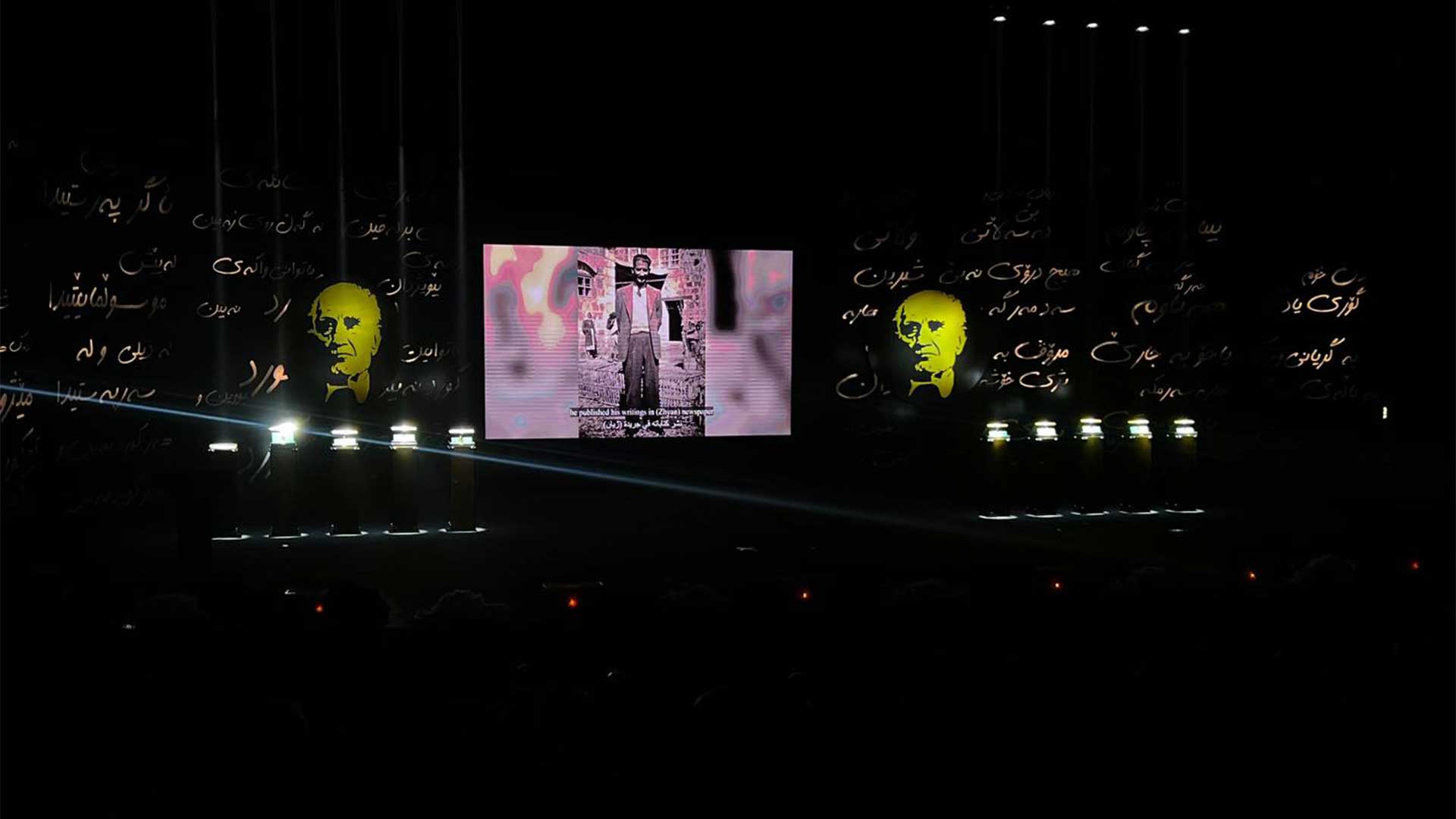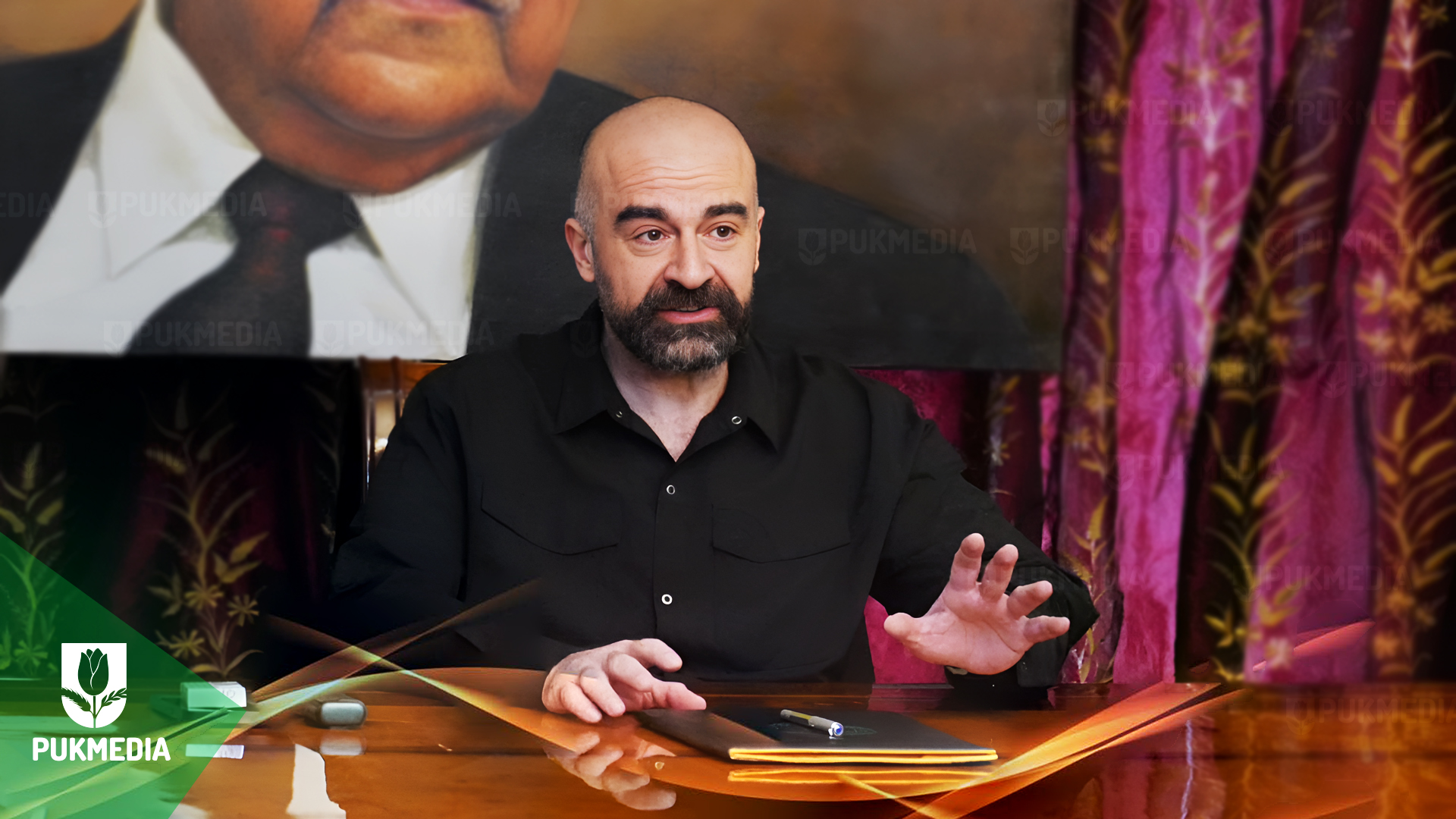Now that spring is here, traditional Kurdish footwear thrives in the Kurdistan Region
Variety 11:05 AM - 2021-03-06
Photo Credit: Shad Ibrahim
Surrounded by pots of glue and scraps of cotton, Muhsin Abdulrahman sits in his tiny workshop, whitening a pair of handmade shoes traditionally crafted in Halabja's Hawraman region.
Forty-five years old Muhsin Abdulrahman has been working in whitening and washing Hawrami Klashs (Kurdish footwears) in the Sabunkaran market of Sulaymaniyah for over 17 years.
Sabunkaran is one of the oldest neighborhoods in Sulaymaniyah city. It is at the heart of the city and nowadays the neighborhood is known as the Hawramistown of Sulaymaniyah similar to the Chinatown in New York.
Hawramis are people who are originally from Hawraman, which is a renowned border town located within Iranian Kurdistan and the Kurdistan Region, and from the Kurdistan Region's side, it is in the outskirts of Halabja city.
Muhsin is originally from Qaradagh district, 42.5 km south of Sulaymaniyah city, but his long experience with Hawramis from his neighborhood made him feel as if he was a Hawrami. He can fluently speak the Hawrami dialect, one of the five Kurdish dialects.
Muhsin comes to the Sabunkaran Bazaar every morning and opens his small shop. People bring their dirty Klash to him to wash and whiten it for them. Muhsin tried to do many other works but didn't manage to succeed and he says: "I love my job"
The meticulously-crafted “Klash”, dates back several hundred years and it is a key feature of Kurdish culture. It is worn with traditional men Kurdish clothes and are produced in Halabja's Hawraman Region.
Halabja is sadly more famous as the site of what is thought to have been the worst ever gas attack targeting civilians.
In March 1988, now-executed dictator Saddam Hussein's forces bombed the area with internationally forbidden chemical gas. An estimated 5,000 people were killed, mostly women and children.
But historically Halabja and the surrounding area have been known for the klash.
The shoe features soles made of cotton fabrics and cowhide and upper vamps that are made with knitted wool thread.
Klash is made in one of three colors -- white, red, or blue -- or some combination of the three, and does not differentiate between the left and right foot. The shoes are known in particular for their sturdiness.
Muhsin says that despite the economical crisis, he washes and whiten 20-25 pairs of Klash and that his work blooms between February and September during the warmer weather.
Reported by Jamal Sargati
PUKmedia
More news
-
German Forces Commander Ended his Mission at Mam Jalal's Grave
12:28 PM - 2024-04-23 -
Golden Bla Awards Ceremony Takes Place in Sulaymaniyah
11:32 AM - 2024-04-23 -
PUK Official: PUK is Committed to Holding Elections on Time
11:04 AM - 2024-04-23 -
Turkish President Meets Kurdish Officials in Erbil
10:42 AM - 2024-04-23
see more
DPM Talabani Asks Turkish President to Lift Ban on Sulaymaniyah Airport
11:43 AM - 2024-04-23
Iraqi & Turkish Presidents: Problems Should Be Resolved Through Dialogue
05:00 PM - 2024-04-22
PUK President: We Will Protect Journalists' Rights
03:10 PM - 2024-04-22
DPM Talabani: We Will Defend Freedom of Press
10:26 AM - 2024-04-22
Most read
-
10 Notable Individuals Receive Golden Bla Award
Kurdistan 09:27 PM - 2024-04-23

.jpg)
.jpg)
.jpg)
.jpg)
.jpg)
.jpg)
.jpg)
.jpg)
.jpg)


.jpg)


 Application
Application


